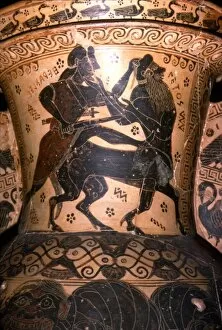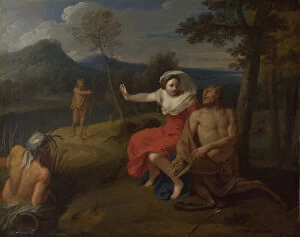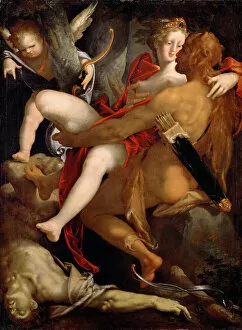Nessos Collection
Nessos, the infamous centaur from Greek mythology, has captivated artists throughout history with his role in the tale of Hercules and Deianeira
For sale as Licensed Images
Choose your image, Select your licence and Download the media
Nessos, the infamous centaur from Greek mythology, has captivated artists throughout history with his role in the tale of Hercules and Deianeira. In a stunning Corinthian pottery detail dating back to the 7th century BC, we witness Hercules battling against the centaur Setos, an event that would later lead to Nessos' involvement. Fast forward to 1914 when a bronze sculpture was cast depicting "The Dying Centaur, " capturing the tragic fate of Nessos. This plaster rendition showcases the artist's ability to convey emotion through their work. Chromolitho brings us another depiction of Hercules, highlighting his strength and bravery as he faces off against various mythical creatures including Nessos. The vibrant colors add depth and intensity to this legendary scene. Artists like Lagrenee, Louis de Boullogne Jr. , Bartholomeus Spranger, Alexandre Gabriel Decamps, and Guido Reni have all been inspired by the captivating story of Nessos' abduction of Deianeira. Their works portray different aspects of this mythological event - from intense action scenes to tender moments between characters. In one particular print, we see Dejanira being abducted by Nessos while holding a bow and arrow in his right hand. This powerful image captures both her vulnerability and his sinister intentions. Lastly, an etching titled "The Abduction on the Unicorn" takes us back even further in time to 1516. While not directly related to Nessos himself, it serves as a reminder that mythical creatures often intertwine within ancient tales. Throughout these artworks spanning centuries, we are reminded of how mythology continues to inspire artists across different mediums. The story remains alive through their creative interpretations - forever immortalizing this complex character within our cultural consciousness.






